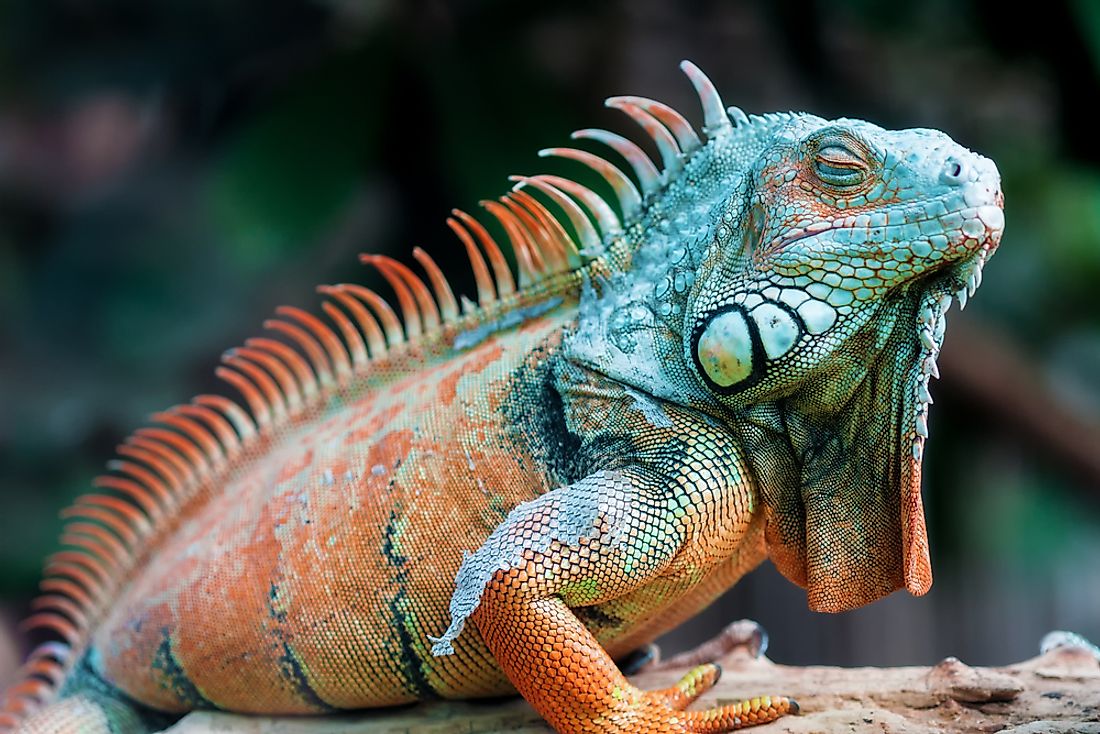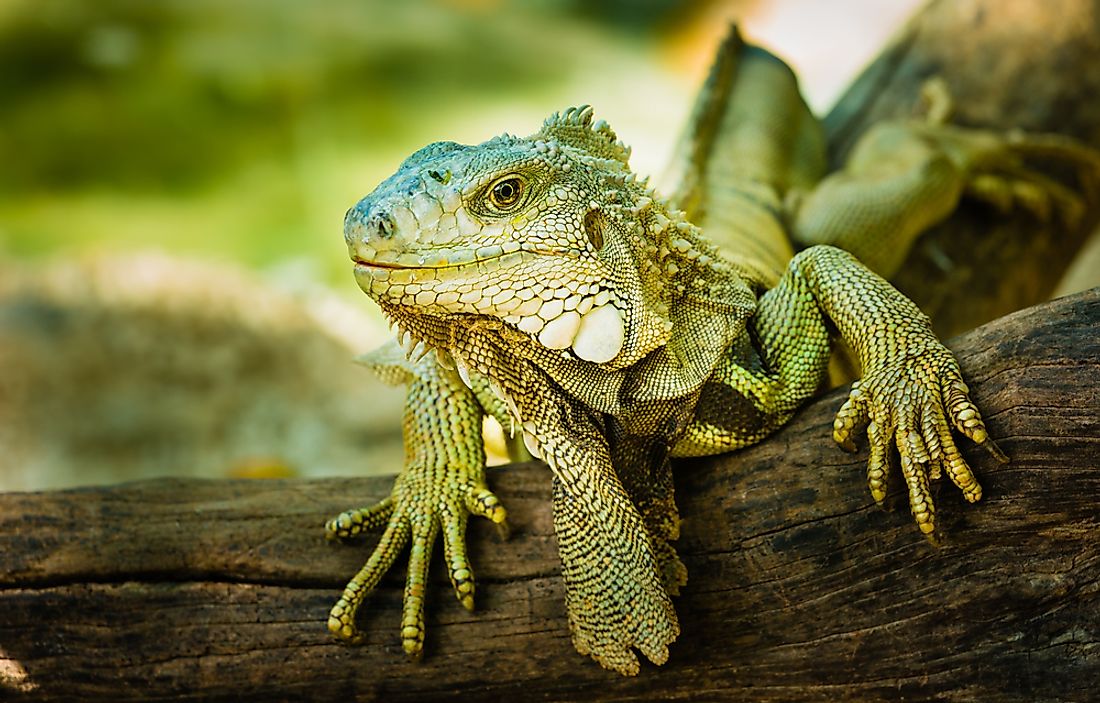Types of Lizards

More than 6,000 lizard species have been identified as existing in the world. The species inhabit all continents except for Antarctica and most oceanic island chains. Lizards are categorized in the class Reptilia in the order Squamata. The animal's size can be as small as a few inches such as the gecko or as large as 9.8 feet for the Komodo dragon. Lizards are grouped into five broad categories.
5. Infraorder Iguania: iguanas, chameleons, agamas, etc.

The Iguania suborder is recognized as among the largest lizard groups, and it is made up of three families consisting of more than 1000 species. This suborder has some of the best-preferred pet lizards such as chameleons, iguanas, and anoles. Many of this group's species are called New World Lizards including phrynosomatids since they mainly inhabit the Americas. Iguanians are majorly arboreal which means that they move in trees. A common characteristic with the lizards is a fleshy nonprehensile tongue, a condition which is substantially modified in chameleons. This group's fossil records go back to the Early Jurassic period. The family Chamaeleonidae is one of the families in the Iguania infraorder, and it has over 200 species. Chameleons inhabit warm habitats from rainforests to deserts. Various species have been sighted in Africa, southern Europe, and Southern Asia. Chameleons are perhaps known for their ability to assume different skin colors. Different species can assume color combinations of purple, light blue, turquoise, blue, yellow, pink, orange, brown, red, black, and green. Another family in this group is the Corytophanidae which consists of helmeted lizards found in the New World. These lizards have highly-developed head crests that resemble casque helmets. The head crests come in handy in dangerous situations when they are used in defensive displays. Lizards in this family include the common basilisk and the Helmeted Iguana.
4. Infraorder Gekkota: geckos, legless lizards, blind lizards

The infraorder Gekkota includes the limbless "snake-lizards" of the Pygopodidae family and all geckos. Gekkota contains seven families. The Gekkonidae family is the biggest of geckos as it has more than 950 identified species in 51 genera. Geckos reside in warm climates across the world in sizes between 0.64 to 24 inches. Many of the geckos cannot blink, and they constantly lick their eyes to keep them moist and clean. The vocalizations of the geckos make them stand out among other lizards, and they use chirping noises to interact. Geckos rank as the most species-rich lizards with roughly 1,500 different species across the world. The family Pygopodidae has 35 species also called flap-footed lizards, legless lizards, and snake-lizards. These lizards are characterized by reduced or lack of limbs and have long slender bodies which make them look like snakes. The lizards lack eyelids and have flat unforked tongues in addition to external ear holes. Pygopodids are indigenous to New Guinea and Australia. The lizards are capable of hearing tones higher than other reptiles.
3. Infraorder Scincomorpha: skinks, wall lizards, etc.

The Scincomorpha infraorder first appeared in fossil records roughly 170 million years ago in the Jurassic period. Skinks are examples of the lizards in this group in the Scincidae family. Skinks are characterized by their somewhat small legs and lack of a pronounced neck. Some genera such as Typhlosaurus do not have limbs while others including Neoseps have reduced limbs. Most skinks species possess long tapering tails that they can shed if predators hold onto them. These species can subsequently regenerate the shed part of the tail. Another family in this group is Cordylidae which consists of small-sized to medium-sized lizards in eastern and southern Africa. These lizards are called girdle-tail lizards, spiny tail lizards, and girdled lizards. These lizards are insectivorous, terrestrial, and diurnal. Girdled lizards have flattened bodies and heads and a thick armor of osteoderms. Most of the lizards have spinal rings on the tail that help the animal when wedging into sheltering crevices as well as in dissuading predators. Lizards in the Gerrhosauridae family are indigenous to Africa and Madagascar. The lizards are called plated lizards, and they inhabit many habitats from dunes to rocky crevices. While some species sport four well-developed limbs, others only have vestigial hind limbs
2. Infraorder Anguimorpha: monitor lizards, gila monsters, slow-worms, etc.

This infraorder was named in 1900 by Fürbringer, and it has five families. The family Anguidae consists of a vast and diverse group of lizards found in the Northern Hemisphere. Anguidae has three subfamilies and 100 species in 10 genera. The hard osteoderms located beneath the scales of the anguids gives them an armored appearance while their absent or reduced limbs make them resemble snakes. Anguids can be as small as 10 cm and as big as 1.5 meters. Anguids can either be viviparous or oviparous and insectivorous or carnivorous. The Anniellidae family has six species in the genus Anniella. This lizard family is called the American legless lizards, and it includes the California legless lizard, the Southern California legless lizard, and the Baja California legless lizard. The Shinisauridae family consists of anguimorph lizards, most of which are extinct and the Chinese crocodile lizard is the only existing representative. This lizard inhabits cool forests of the Chinese provinces of Guangxi, Hunan, and Guizhou and the Vietnamese Province of Quang Ninh Province. The Chinese crocodile lizard likes to stay in shallow water or in the overhanging vegetation where it can catch worms, insects, tadpoles, and snails.
1. Infraoder Amphisbaenia: legless burrowing worm lizards

Amphisbaenians have long bodies and reduced or no limbs in addition to rudimentary eyes. Most species have pink bodies with their scales organized in rings making them look like earthworms. The lizards in the genus Bipes have forelimbs while the others are limbless. Amphisbaenians have been sighted in Africa, the Caribbean, North America, Europe, and South America. Although Amphisbaenians have a superficial resemblance to some primitive snakes, they have numerous features that differentiate them from other reptiles. Amphisbaenians have their right lung reduced, for example to be contained in their narrow bodies while snakes have their left lung reduced. The skin of these lizards is loosely attached to their bodies and when in motion, it appears that the skin moves while the body drags along. Amphisbaenians can tear fleshy chunks out of a bigger prey due to their powerful interlocking teeth. There are six recognized families of Amphisbaenians.











